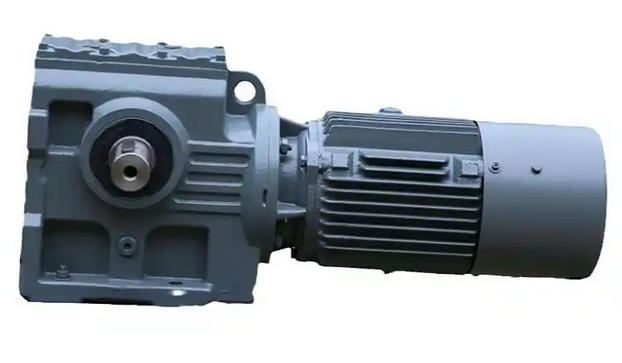What are the hazards of S87D10M4-2.2KW-180 worm gear reducer working at high temperatures
The S87D10M4-2.2KW-180 worm gear reducer ("S87" is the machine base number, "D100M4" corresponds to the motor specification, "180" usually refers to the installation method or output shaft parameters) works at high temperatures, and the hazards will gradually spread from the lubrication system, core transmission components, sealing structure, and motor accessories, ultimately leading to performance degradation, frequent failures, and even complete machine scrapping. The following is a specific hazard classification and mechanism analysis:
1、 Core hazard: Lubrication system failure (the top priority issue at high temperatures)
The normal operation of worm gear reducers relies on the "friction reduction, cooling, and rust prevention" effects of lubricating media (grease/oil). High temperatures can directly damage the core functions of the lubrication system and are the starting point for all subsequent hazards:

1. The viscosity of the lubricating medium drops sharply, causing the oil film to rupture
This type of reducer usually uses lithium based grease or medium viscosity gear oil, and its viscosity decreases exponentially with increasing temperature - when the ambient temperature+its own temperature rise causes the temperature of the lubricating medium to exceed 60 ℃, the viscosity will decrease by 30% to 50%; When the temperature exceeds 80 ℃, the viscosity may drop below one-third of the normal operating value.
Insufficient viscosity can lead to:
The "oil film" on the meshing surface between the worm and worm gear cannot be formed (the oil film is the key to isolating metal friction), and the metal surface comes into direct contact. The friction coefficient skyrockets from 0.05 (under normal oil film) to 0.3-0.5 (in dry friction state), and the heat generated by friction further intensifies, forming a vicious cycle of "high temperature → viscosity decrease → friction intensification → higher temperature".
2. Accelerated oxidation and aging of lubricating media, resulting in harmful impurities
High temperature will accelerate the oxidation reaction of lubricating media (the oxidation rate increases by about 1 times for every 10 ℃ increase in temperature):
a、 Ordinary lithium based grease will experience blackening, clumping, and an increase in acid value (generating organic acids) within 1-2 months after long-term operation at temperatures above 70 ℃; When the temperature exceeds 90 ℃, hard impurities such as asphaltene and carbides will precipitate.
b、 Harm: Organic acids can corrode the metal surfaces of worm gears and worm gears (especially copper worm gears, which are prone to corrosion and produce copper soap, further contaminating lubricating grease); Hard impurities can embed into the meshing surface, causing "abrasive wear", which is equivalent to adding "sandpaper" between transmission components to accelerate tooth surface failure.
3. Loss or leakage of lubricating medium
When the temperature exceeds the "drop point" of the lubricating grease (the drop point of ordinary lithium grease is about 120 ℃, and that of high-temperature grease is about 180 ℃), the lubricating grease will change from semi-solid to liquid state and leak through the sealing gap of the reducer (such as the output shaft oil seal and end cover joint surface):
a、 Short term: Decreased amount of lubricating grease, insufficient lubrication on the mating surface, and localized overheating;
b、 Long term: complete loss of lubricating grease, transmission components falling into "no lubrication dry wear", which can cause tooth surface erosion and bearing jamming within a few minutes.

